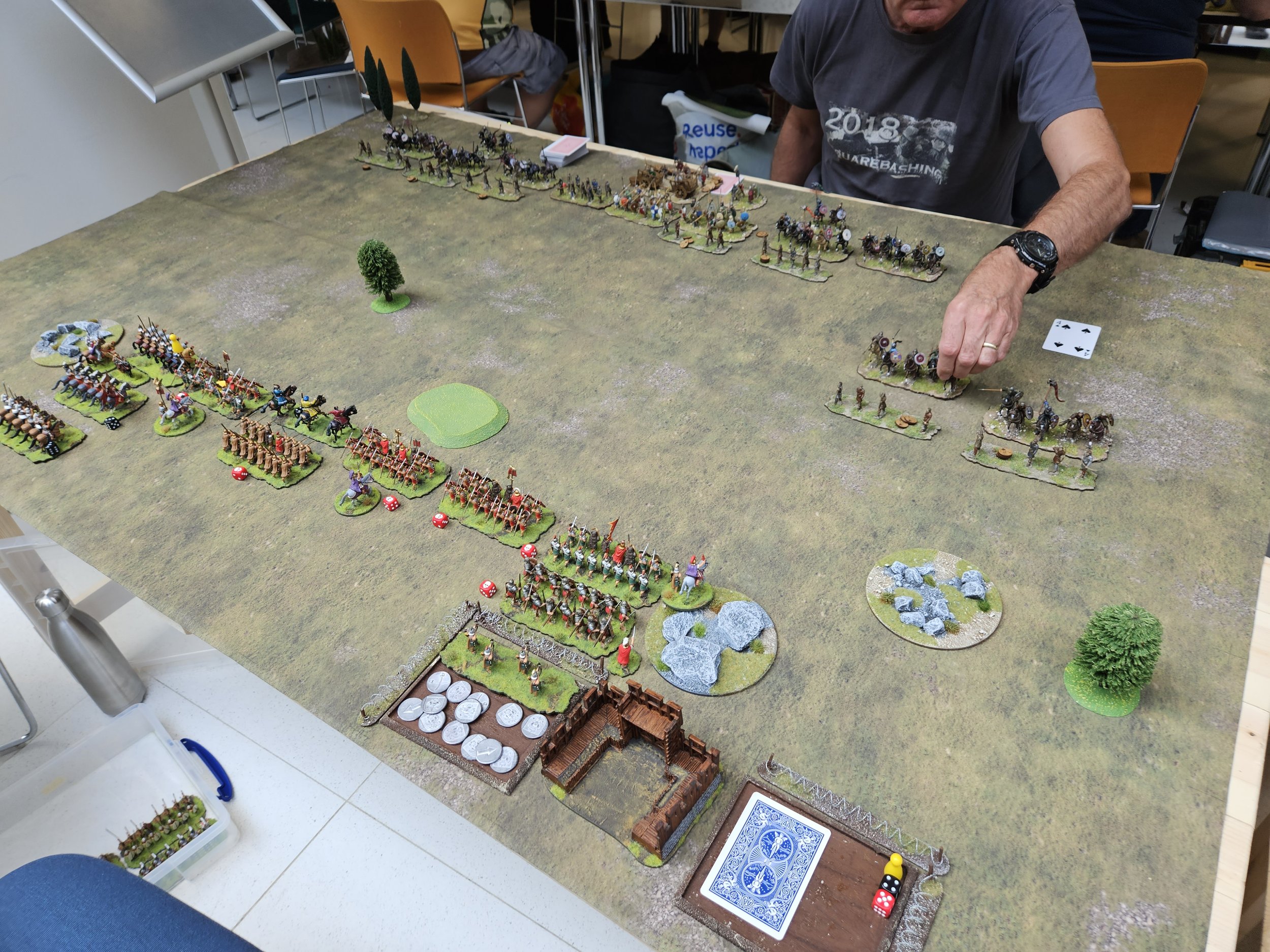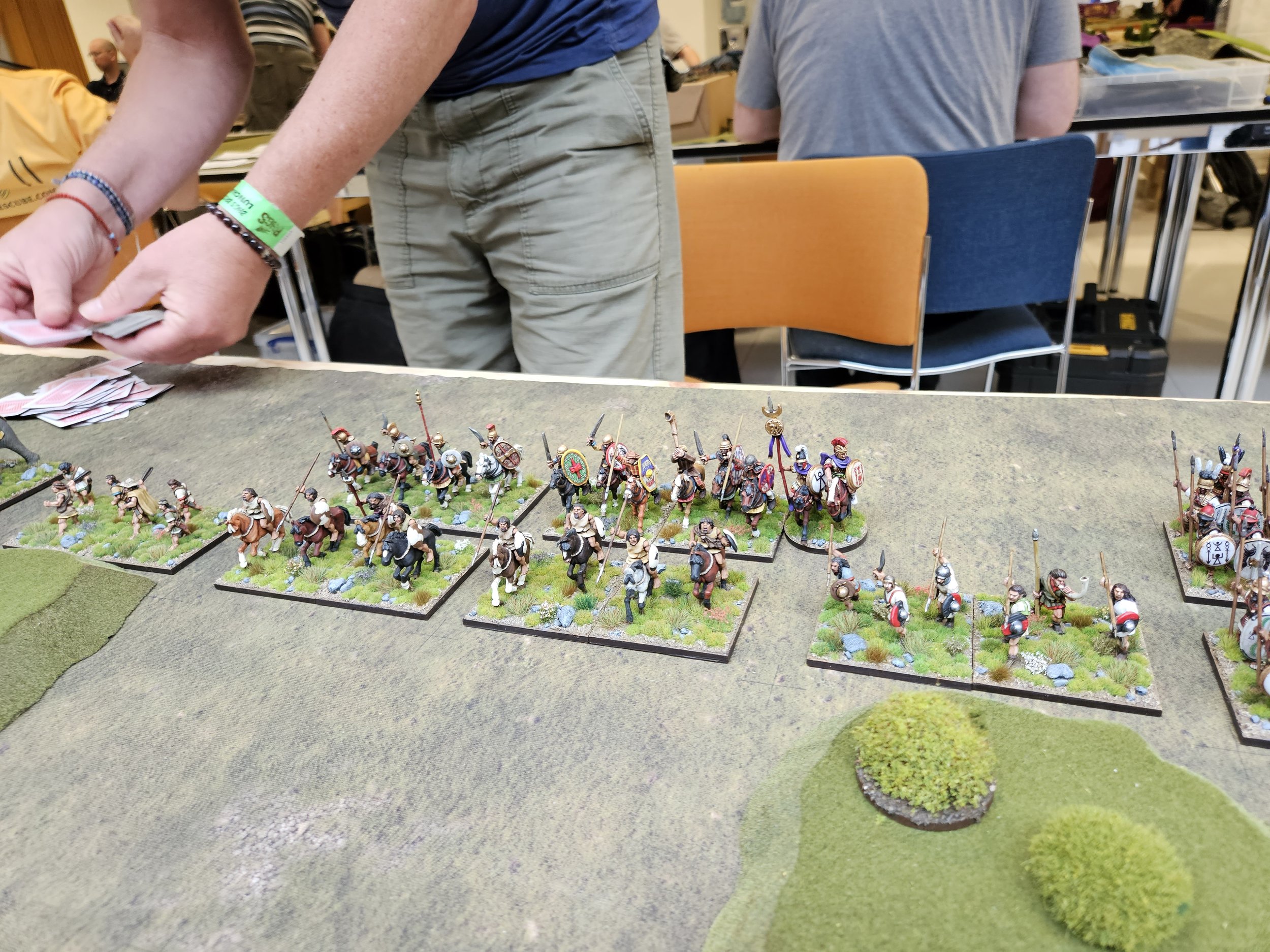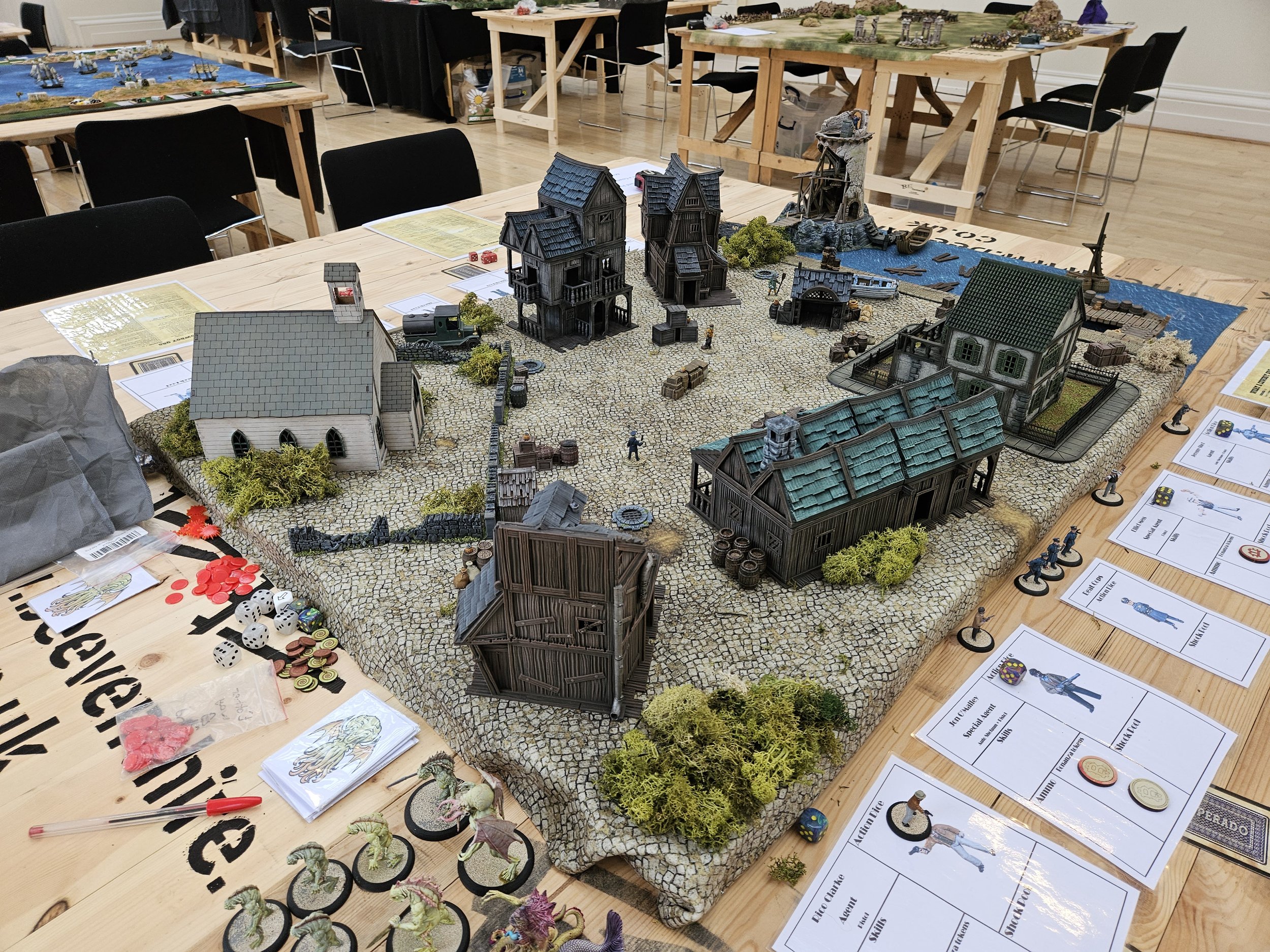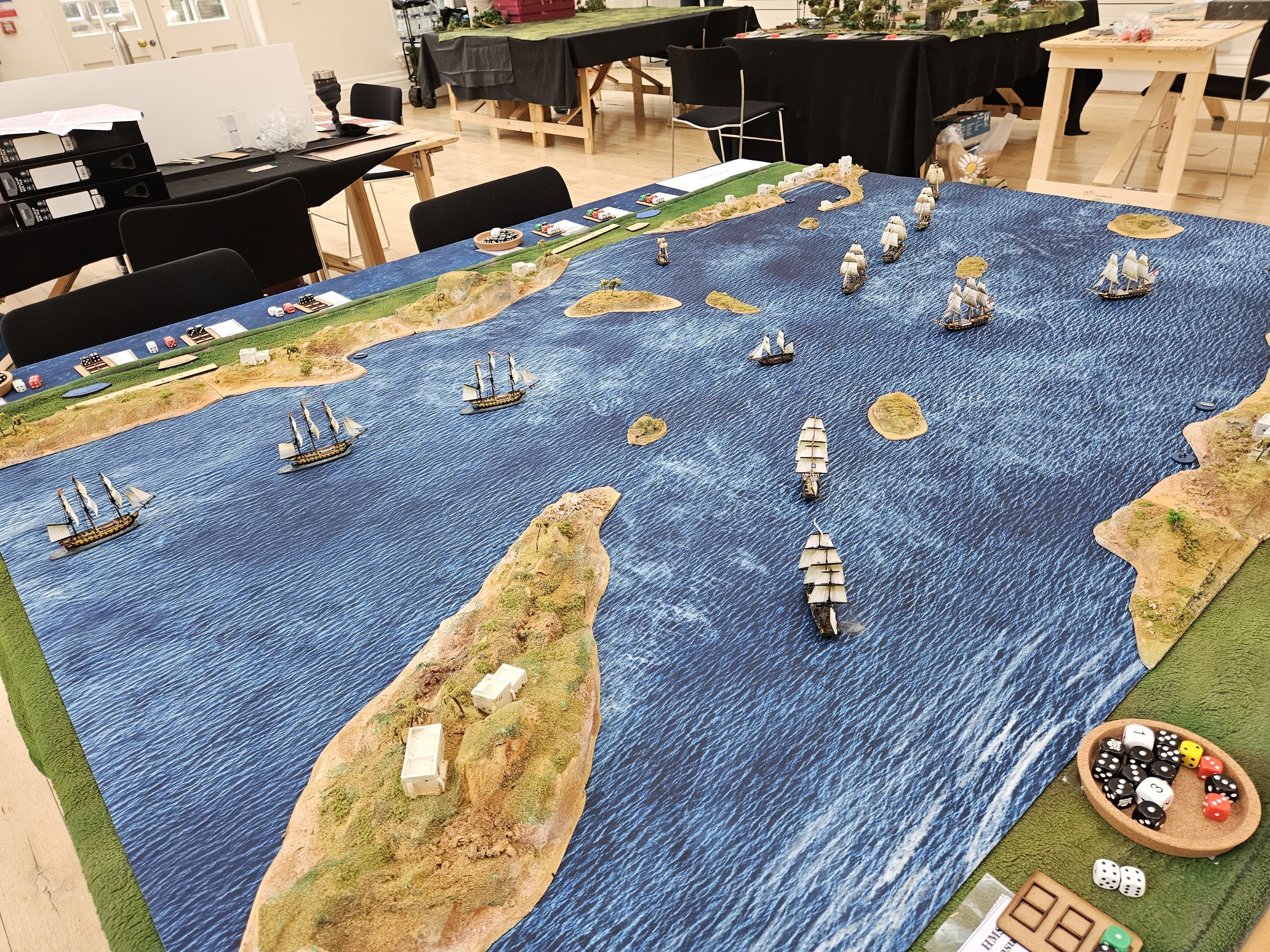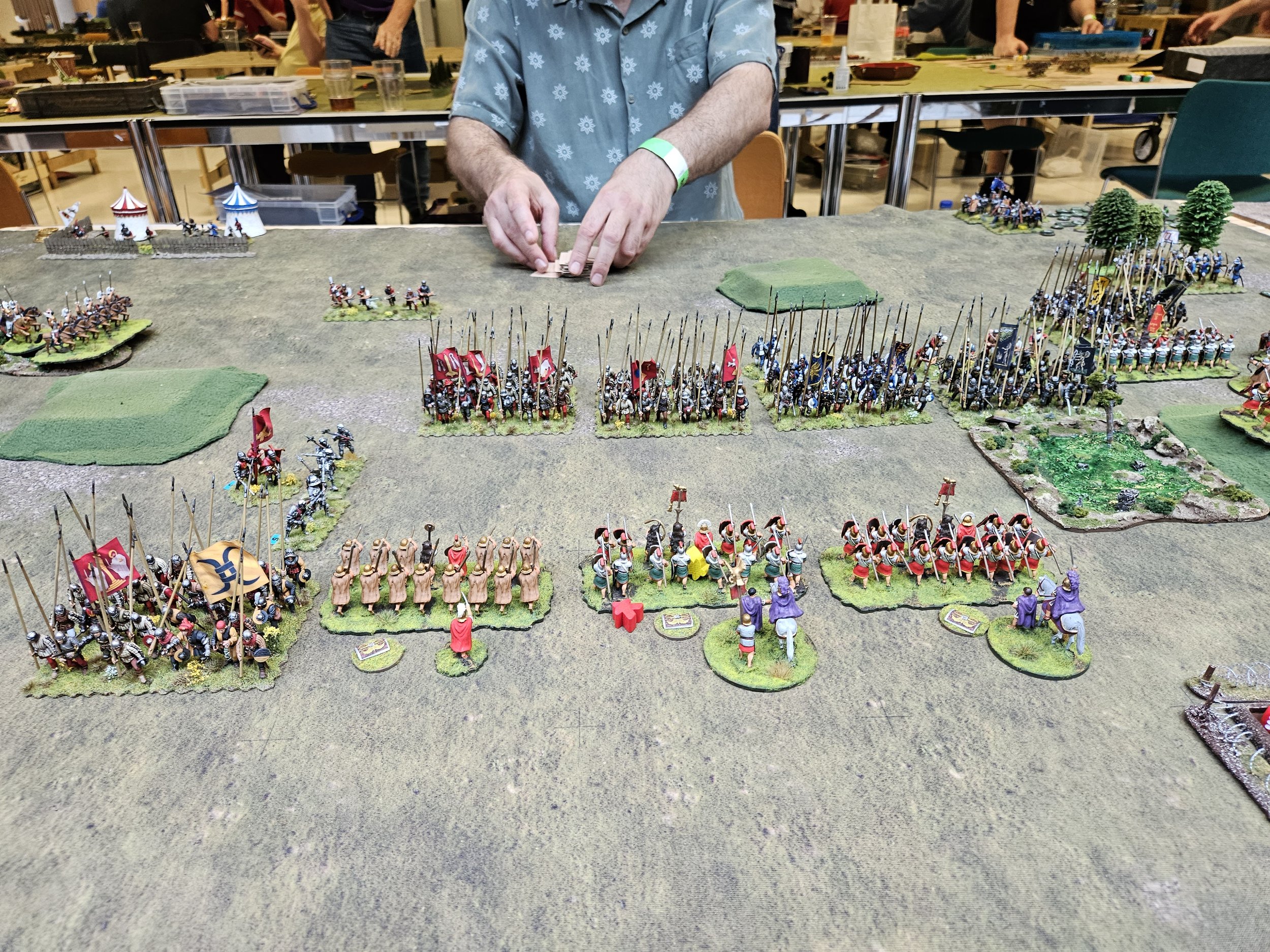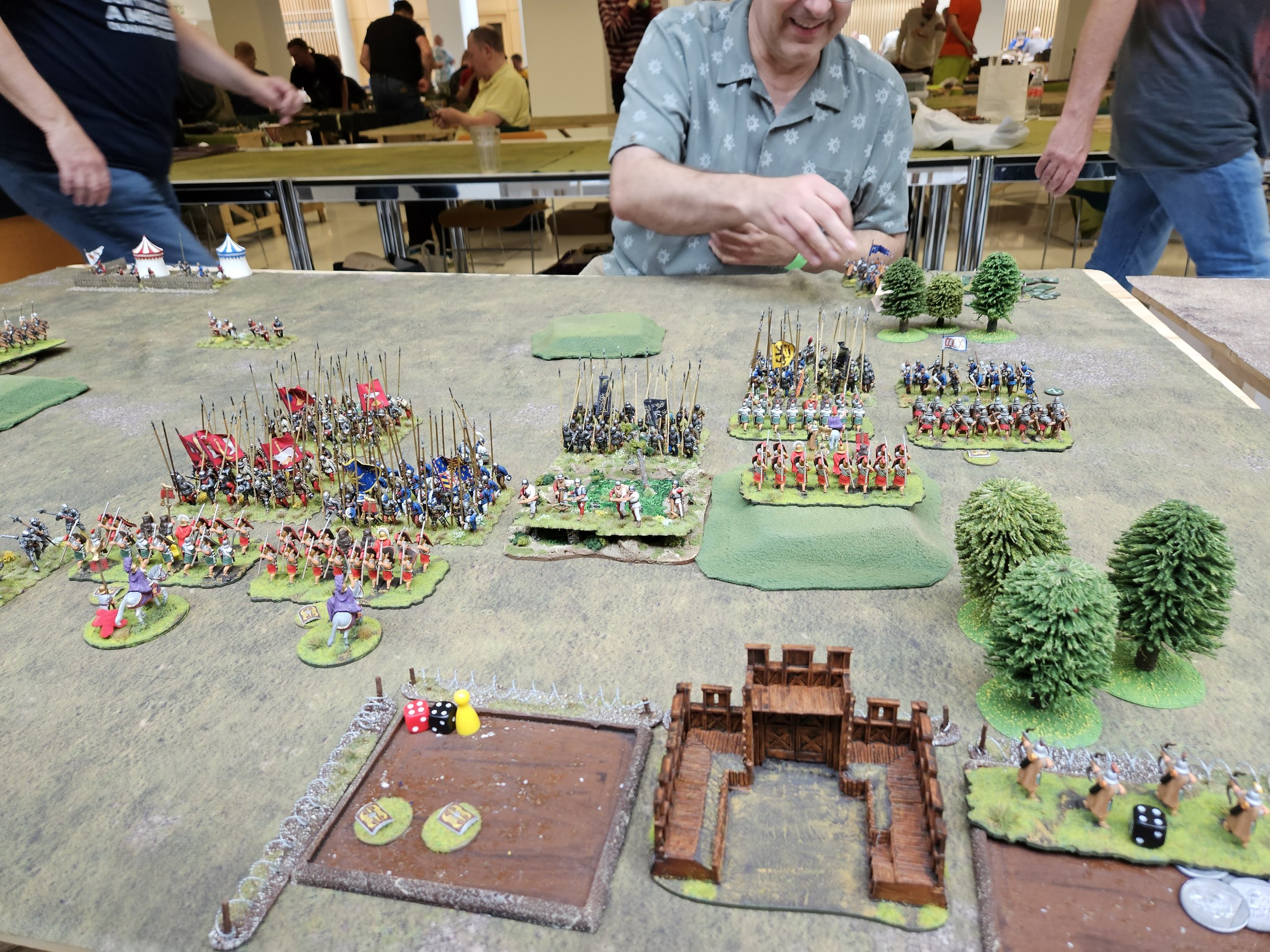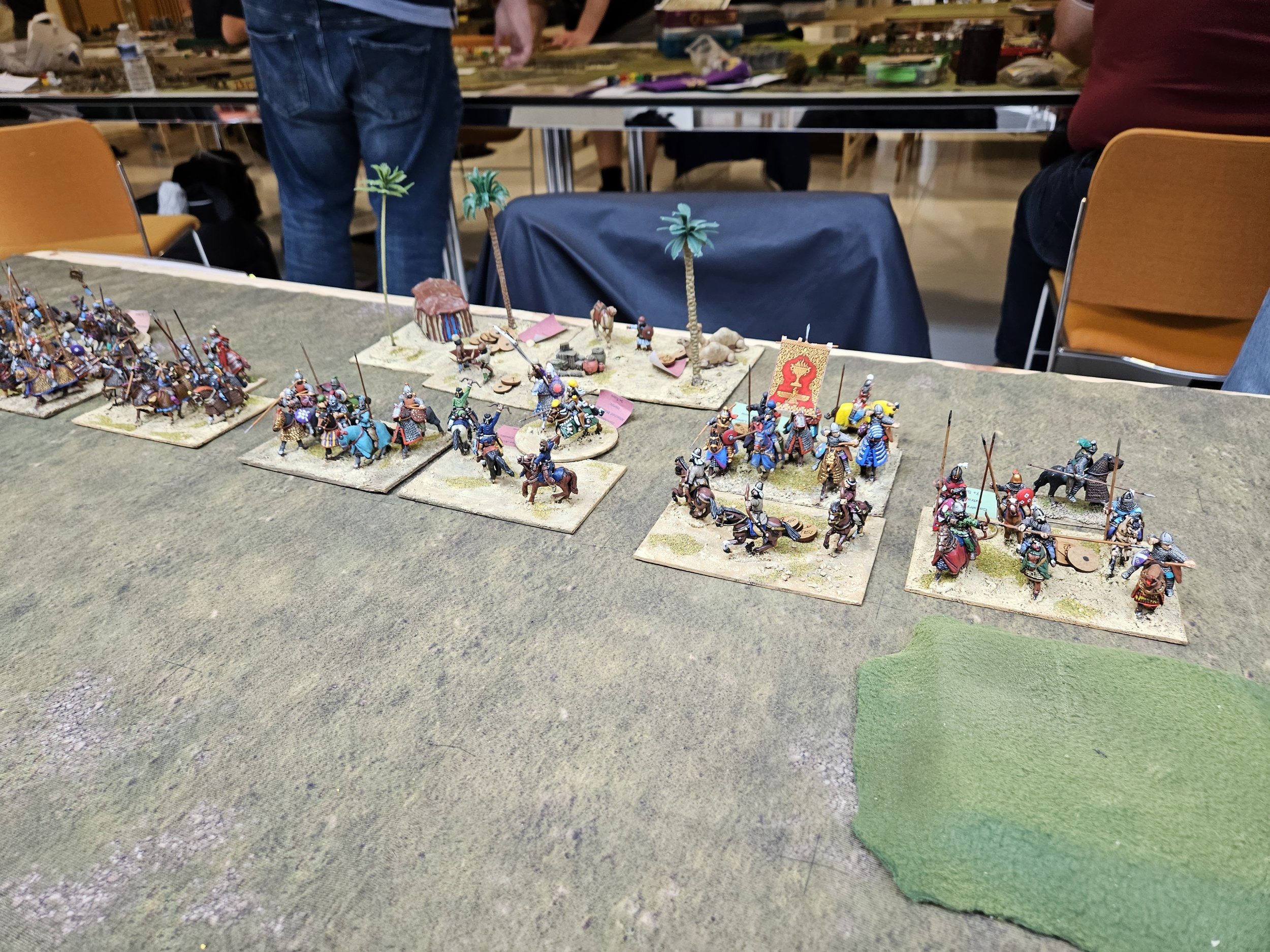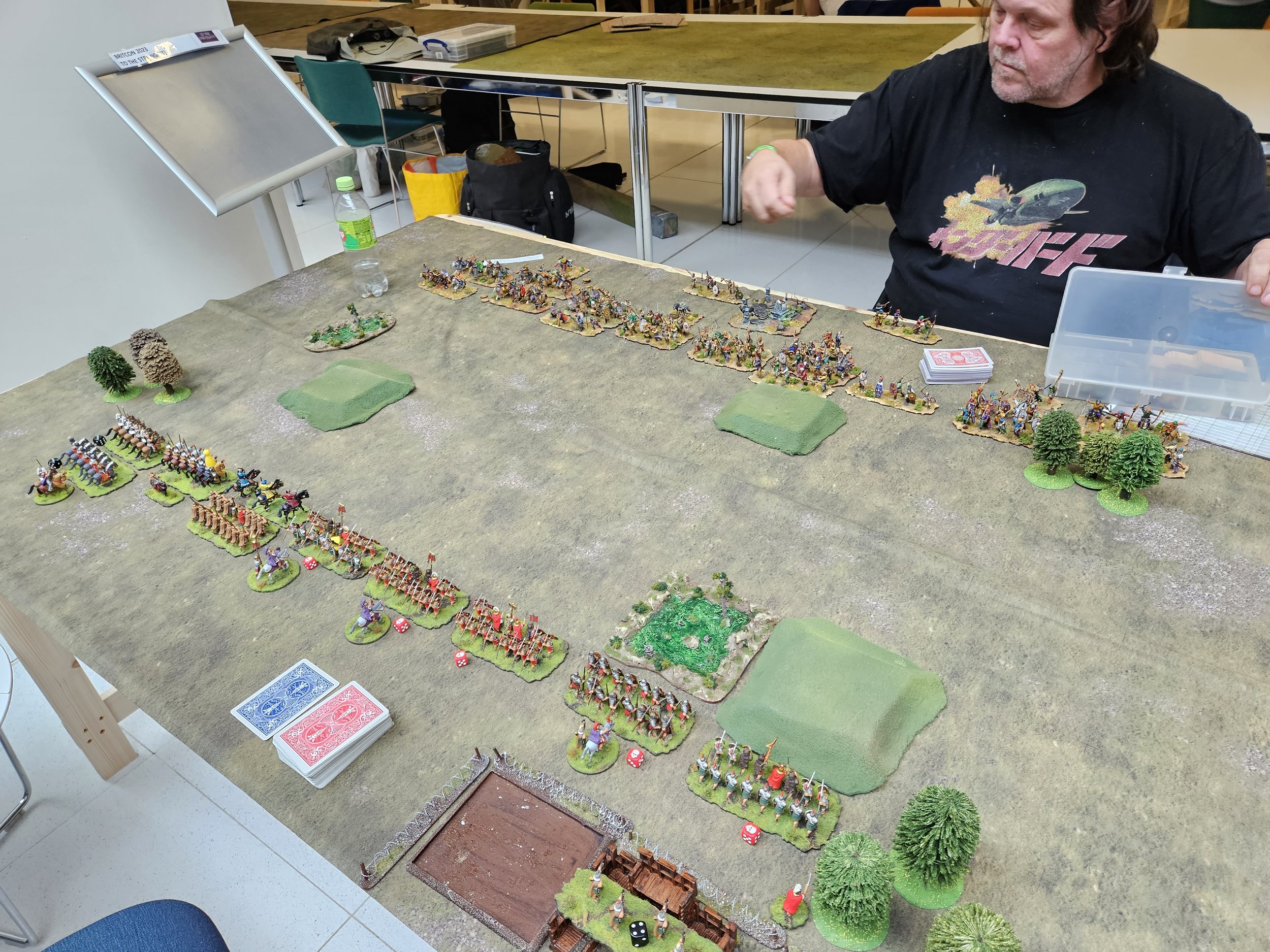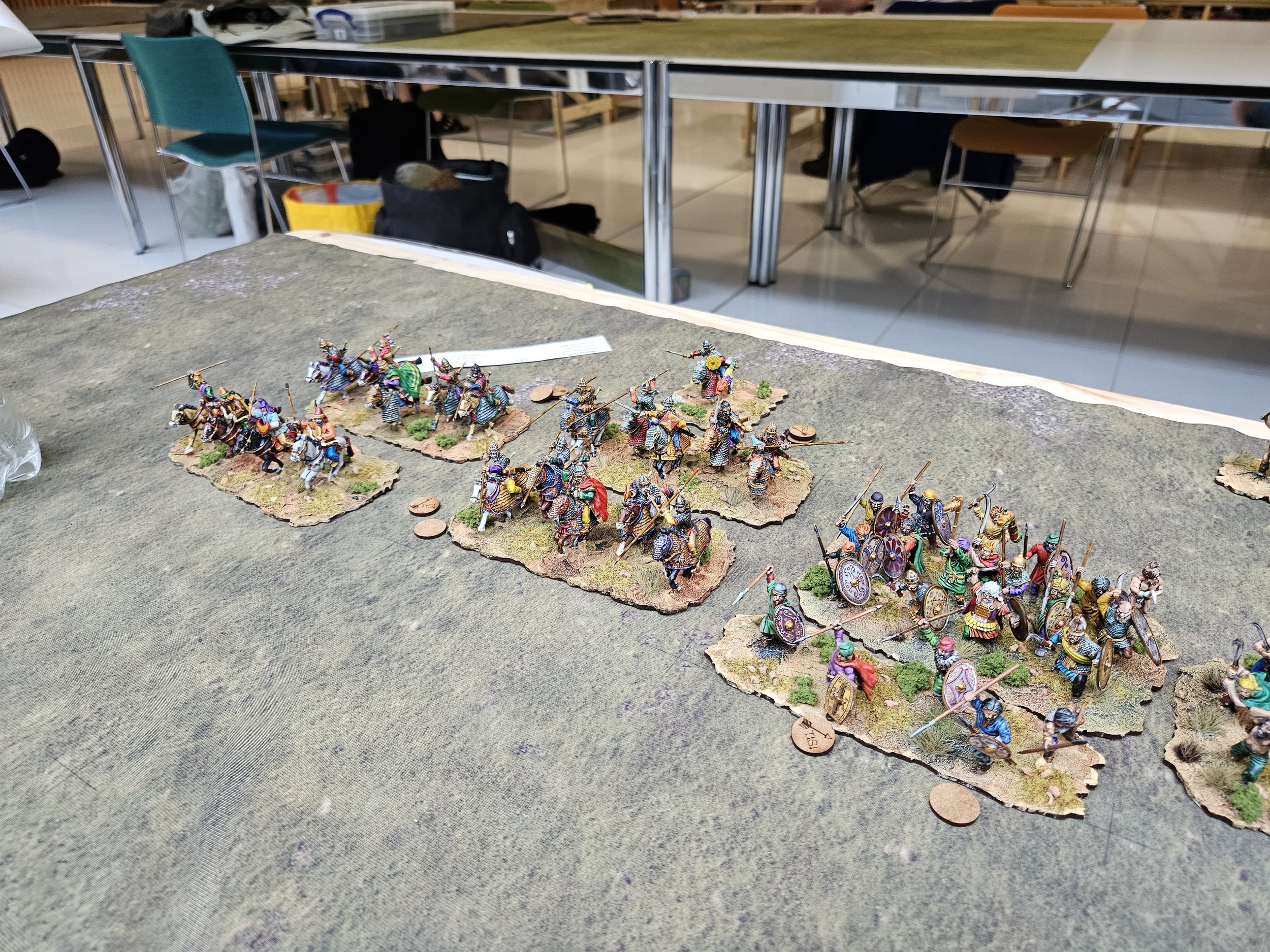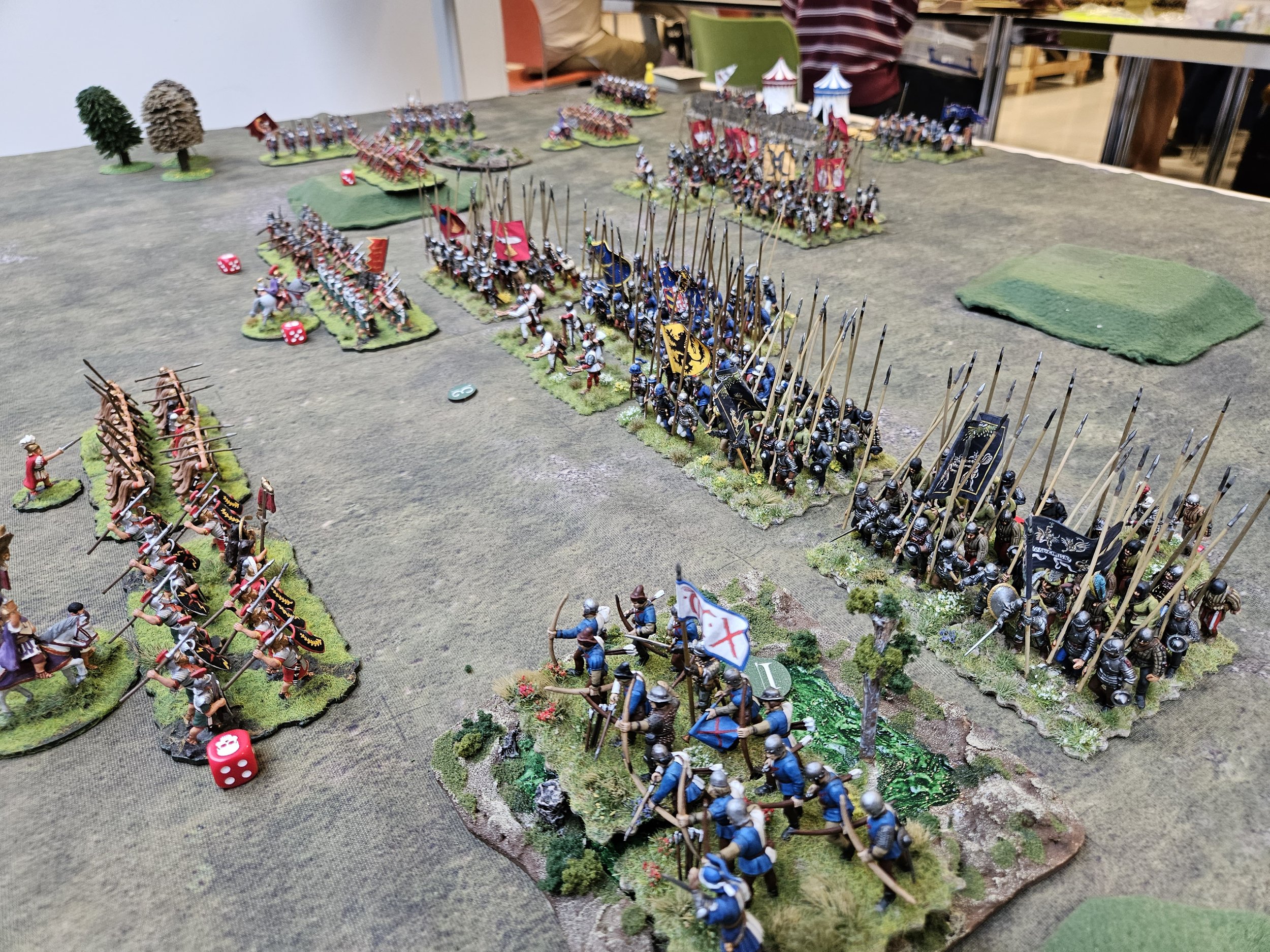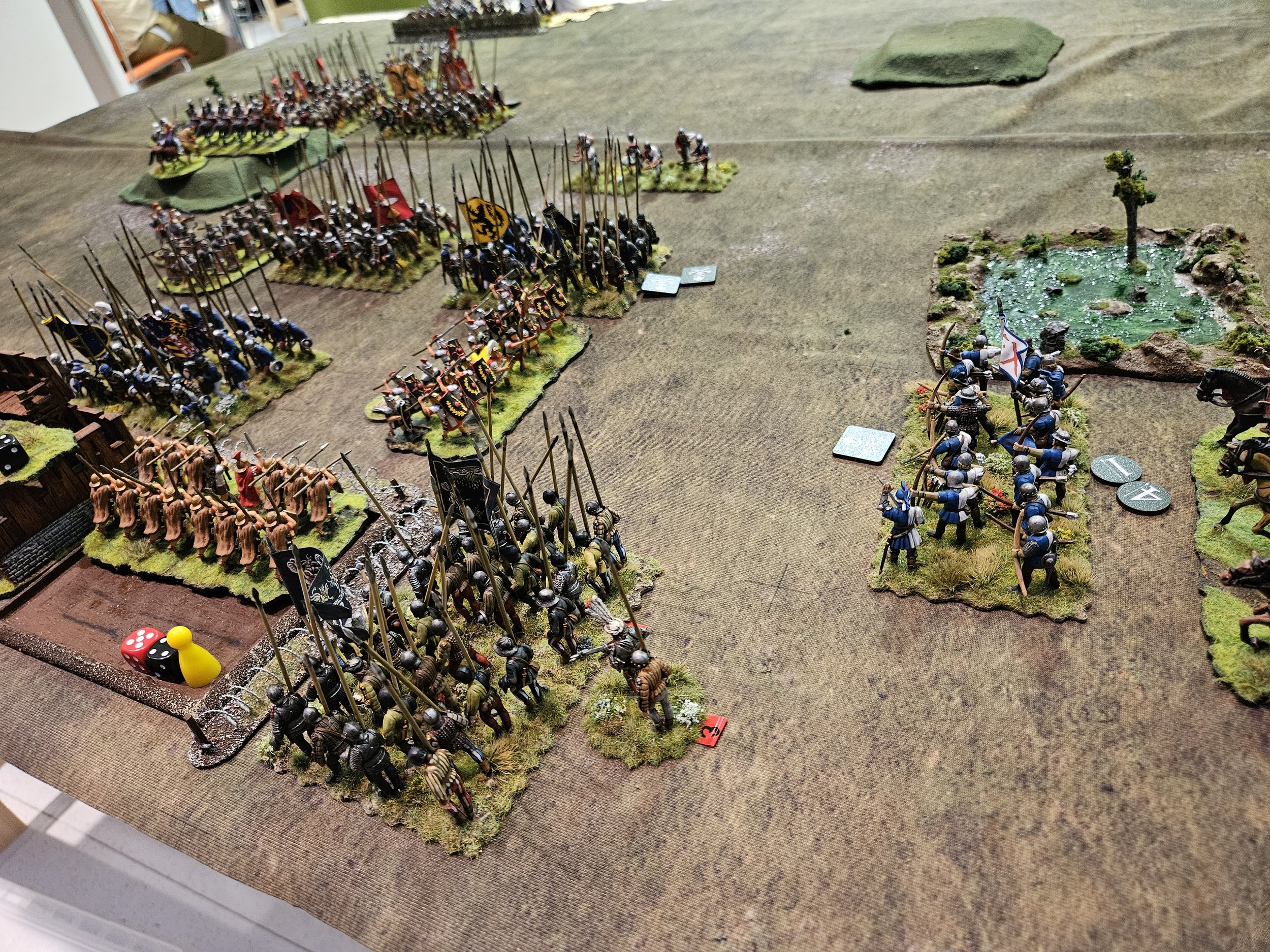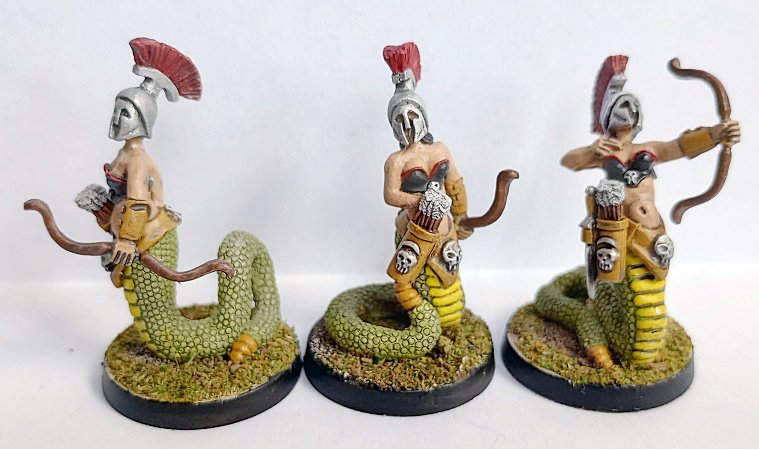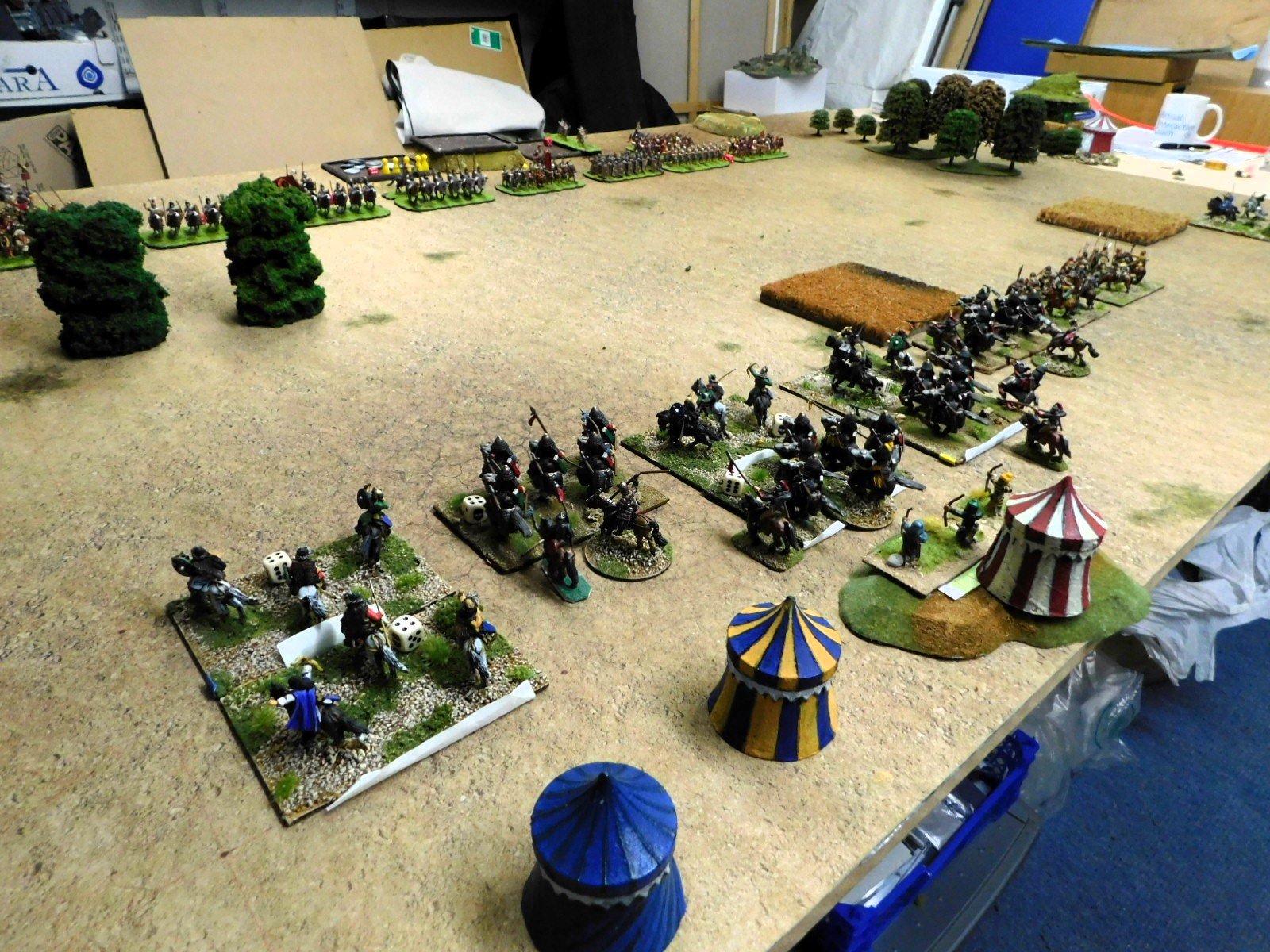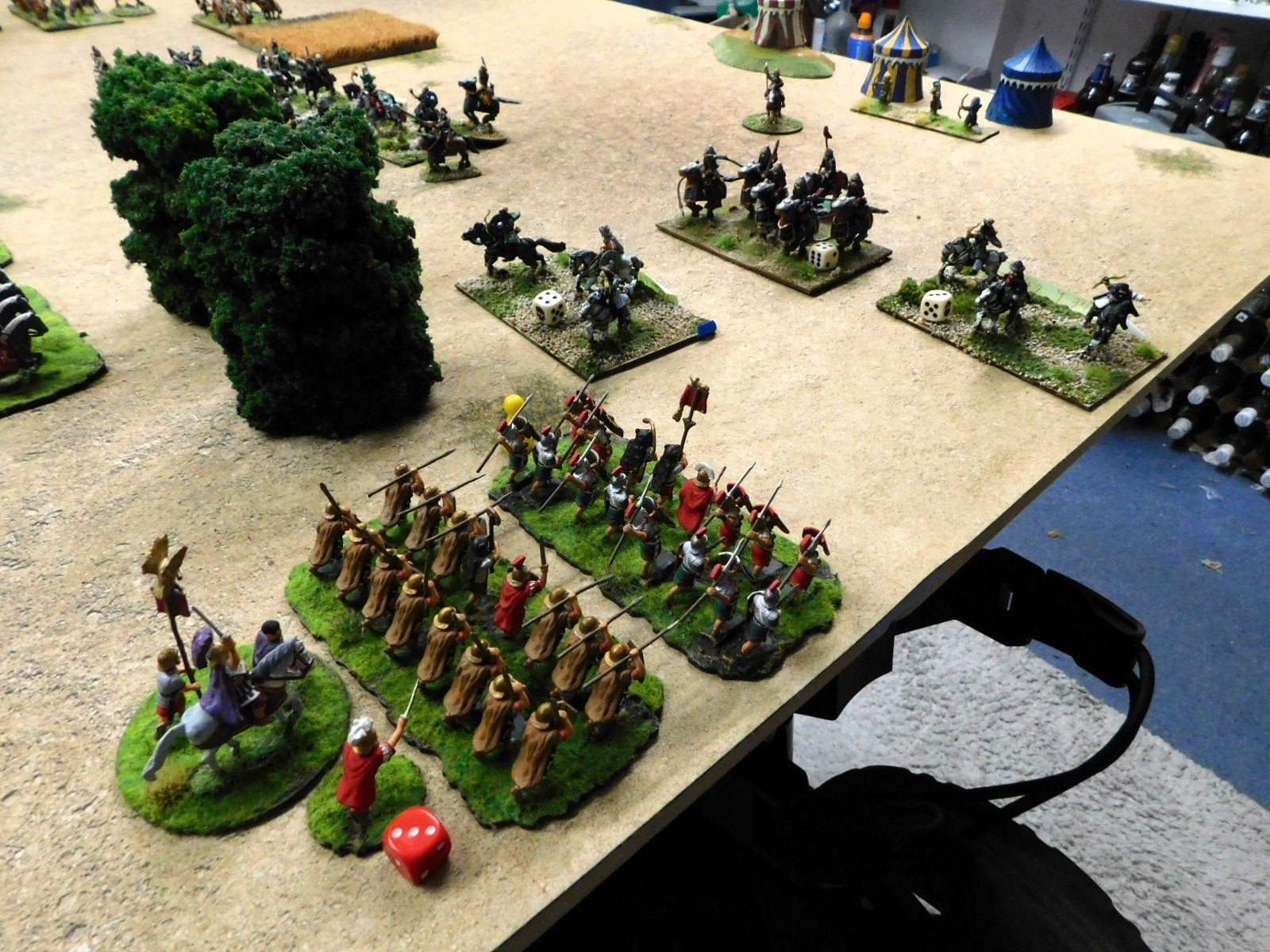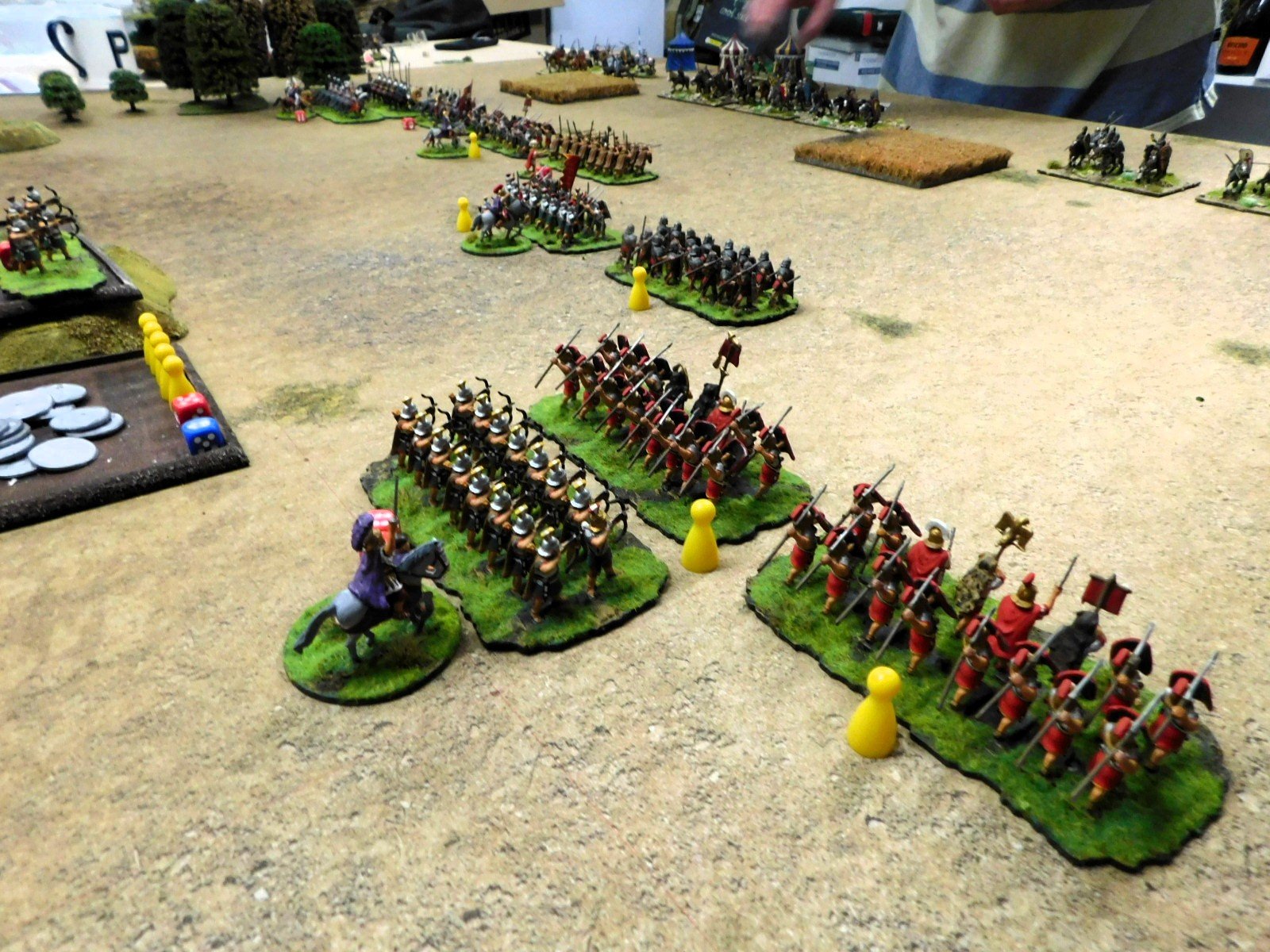Kristoff Designs Airfield Set
/I was pootering about on EBay the other day when I came across a WW2 pre-painted Wargame Airfield Scenery terrain set from Kristoff Designs.
I have several scenarios involving airfields that I play, and this looked like a good opportunity to get some specific terrain to use for them…and at only £20 for the lot seemed like a good bargain as well.
The pack arrived quickly, so I set to work and began the build, starting with the hanger building with the big sliding doors.
There are instructions for this build, and the hanger went together easily once I’d worked out that the black side of the internal struts faces into the hanger rather than outwards (it would have been useful to have that fact noted on the instructions). Even the roof went on well: the curve is fairly slight, so it’s easy to get the heavy paper/light card provided to sit on the joists, if that’s the right term to use. The sliding doors do indeed slide: well, one of mine does. The other lurches about a bit but can be positioned so it looks okay once the model is on the tabletop.
Actually, my only criticism of this building is its size. It’s supposed to be a hanger of some kind, but the only thing that would fit into it is a very small plane indeed. I’m actually wondering whether the set is designed for the mini-FOW planes (an abomination in my opinion: 15mm planes should be 15mm not 1/144 or whatever) but, as you can see from the photo below, not even my humble i-16 can get through the doors and there’s no chance for the Stuka!
The four Nissan huts were next. I love the front and the backs of these: the little green shutters and doors and plank effects work really well. My only problem was the fact that I couldn’t get the roofs to fit properly. Now I’m sure this is down to my lack of modelling skill, but I’m not really happy with the job I did on any of the four: the RSM would have the lot torn down and start again! Note also that these Nissan huts come without any instructions, which I am sure is fine for the intuitive modeller, but wasn’t for me!
Even worse, the Control Tower also comes with no instructions, or at least the set I had didn’t have any. This is actually a great little model, but it was quite challenging to put together without a step-by-step guide.
The outside staircase is a particular case in point: I wouldn’t risk climbing up the one I built! If you are building one of these, then the stairs themselves are pretty tough to do: I did mine by gluing the frame together then poking the steps through the bannisters and twisting them into position: very fiddly and not much fun! The illustration also shows doors: I think I’m supposed to build some out of the bits that punch out of the door spaces, but that seems very hard to do!
The two radar towers also require intuition to put together but, fortunately, aren’t very difficult to do. The runways are useful as well, but are very narrow: see my comments above about the hanger building.
Overall, I am pleased that I have these kits, but proper instructions would have made building them easier, and although they are very good value at only £20, I would have preferred to have paid a bit more and got a proper sized hanger. As it is, it is more of a tall storage shed!
All the kit together does, however, look suitably like some run down airfield in the desert or Malaya or the like, so will suit what I want it for. Not “recommended” but more of a “not bad for what you pay for it” rating.







